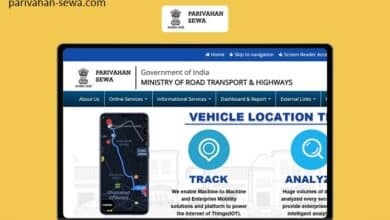Parivahan Sewa Home: A Comprehensive Guide

Introduction
In an era where convenience and efficiency are paramount in every aspect of life, Parivahan Sewa Home emerges as a beacon of innovation in the transportation sector. Whether it’s commuting to work, traveling for leisure, or transporting goods, the concept of Parivahan Sewa Home has redefined the way we perceive and utilize transportation services. This blog post aims to explore the multifaceted facets of Parivahan Sewa Home, elucidating its significance, benefits, and impact on modern-day mobility.
Parivahan Sewa Home
At its core, Parivahan Sewa Home embodies the ethos of seamless transportation solutions. It encompasses a range of services aimed at enhancing accessibility, comfort, and efficiency in commuting. From ride-sharing platforms to integrated public transport systems, Parivahan Sewa Home encompasses various initiatives designed to cater to diverse transportation needs.
The Evolution of Parivahan Sewa Home
The journey of Parivahan Sewa Home traces back to its conceptualization as a means to address the challenges posed by traditional transportation models. Over the years, it has evolved into a comprehensive ecosystem that leverages technology, sustainability, and user-centric design to offer innovative mobility solutions.
Impact on Urban Mobility
In bustling urban landscapes, Parivahan Sewa Home plays a pivotal role in alleviating congestion, reducing carbon emissions, and enhancing overall mobility. By promoting shared transportation options, such as carpooling and bike-sharing, it fosters a culture of sustainability while easing the burden on existing infrastructure.
Empowering Commuters
One of the hallmark features of Parivahan Sewa Home is its emphasis on empowering commuters with choice and flexibility. Through intuitive mobile applications and user-friendly interfaces, commuters can seamlessly navigate through a plethora of transportation options, customizing their journey according to preferences and requirements.
Sustainability and Environmental Impact
In an era of heightened environmental awareness, Parivahan Sewa Home emerges as a catalyst for sustainable transportation practices. By promoting eco-friendly modes of travel, such as electric vehicles and public transit, it contributes to reducing carbon footprint and mitigating the adverse effects of vehicular pollution.
Accessibility and Inclusivity
Parivahan Sewa Home endeavors to make transportation accessible to all segments of society, including persons with disabilities and marginalized communities. Through initiatives aimed at enhancing accessibility features and ensuring equitable access to transportation services, it strives to foster inclusivity in mobility.
Economic Implications
Beyond its social and environmental benefits, Parivahan Sewa Home also has significant economic implications. By optimizing transportation networks and streamlining logistical processes, it enhances productivity, stimulates economic growth, and fosters entrepreneurship within the transportation sector.
Future Prospects and Innovations
As technology continues to evolve, the future of Parivahan Sewa Home holds promising prospects for further innovation and expansion. From autonomous vehicles to smart infrastructure, ongoing research and development initiatives promise to revolutionize the landscape of transportation as we know it.
Challenges and Considerations
Despite its myriad benefits, Parivahan Sewa Home faces its share of challenges and considerations. Issues such as regulatory frameworks, data privacy concerns, and infrastructure limitations necessitate careful deliberation and collaborative efforts to ensure the sustainable growth of the ecosystem.
Global Perspectives and Adoption
While Parivahan Sewa Home initially gained traction in certain regions, its principles and practices have garnered attention on a global scale. From developed nations to emerging economies, governments and stakeholders are increasingly recognizing the importance of adopting innovative transportation solutions to address contemporary mobility challenges.
Conclusion
Parivahan Sewa Home stands as a testament to the transformative potential of technology and innovation in reimagining transportation systems. By prioritizing accessibility, sustainability, and user-centric design, it not only enhances the quality of commuting experience but also contributes to building more resilient and inclusive communities.
FAQs:
1. What is Parivahan Sewa Home?
- Parivahan Sewa Home encompasses a range of transportation services aimed at enhancing accessibility, sustainability, and efficiency in commuting. It includes initiatives such as ride-sharing platforms, integrated public transit systems, and innovative mobility solutions.
2. How does Parivahan Sewa Home promote sustainability?
- Parivahan Sewa Home promotes sustainability by encouraging eco-friendly modes of travel, such as electric vehicles and public transit, thus reducing carbon emissions and mitigating the adverse effects of vehicular pollution.
3. What are the economic implications of Parivahan Sewa Home?
- Parivahan Sewa Home has significant economic implications, as it optimizes transportation networks, enhances productivity, stimulates economic growth, and fosters entrepreneurship within the transportation sector.
4. What challenges does Parivahan Sewa Home face?
- Parivahan Sewa Home faces challenges such as regulatory frameworks, data privacy concerns, and infrastructure limitations, which require careful consideration and collaborative efforts to address effectively.
5. How is Parivahan Sewa Home perceived on a global scale?
- While initially gaining traction in certain regions, Parivahan Sewa Home principles and practices have garnered attention globally, with governments and stakeholders recognizing the importance of adopting innovative transportation solutions to address contemporary mobility challenges.





